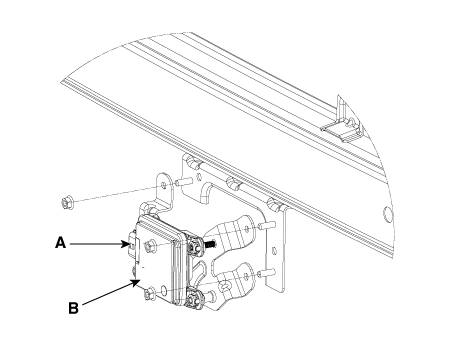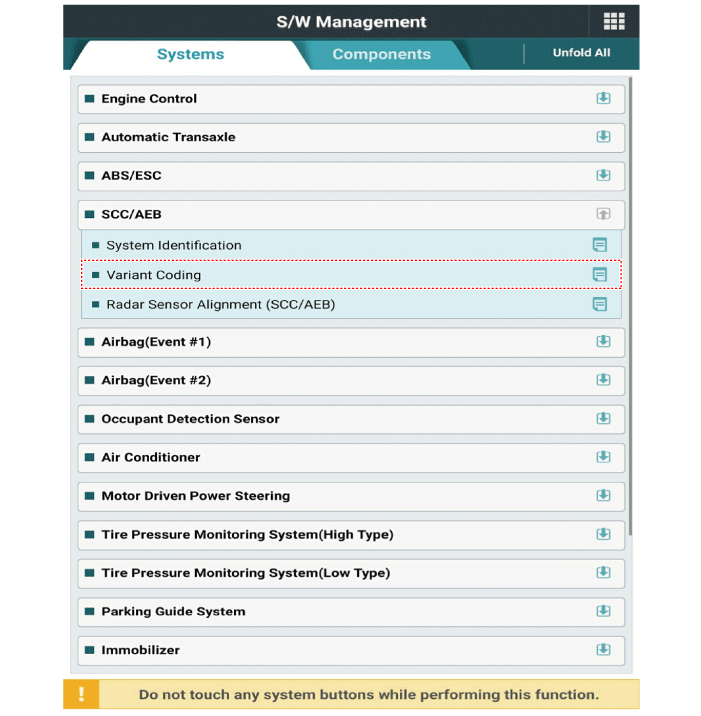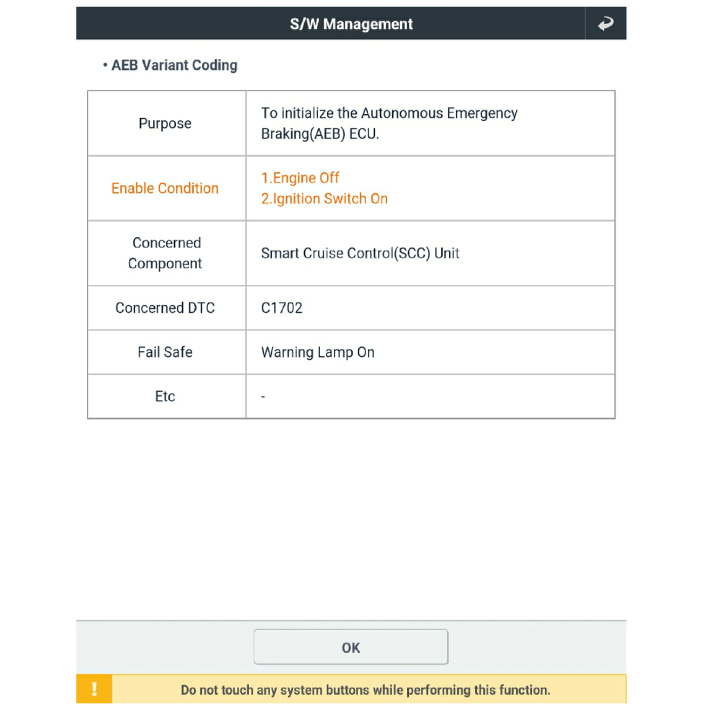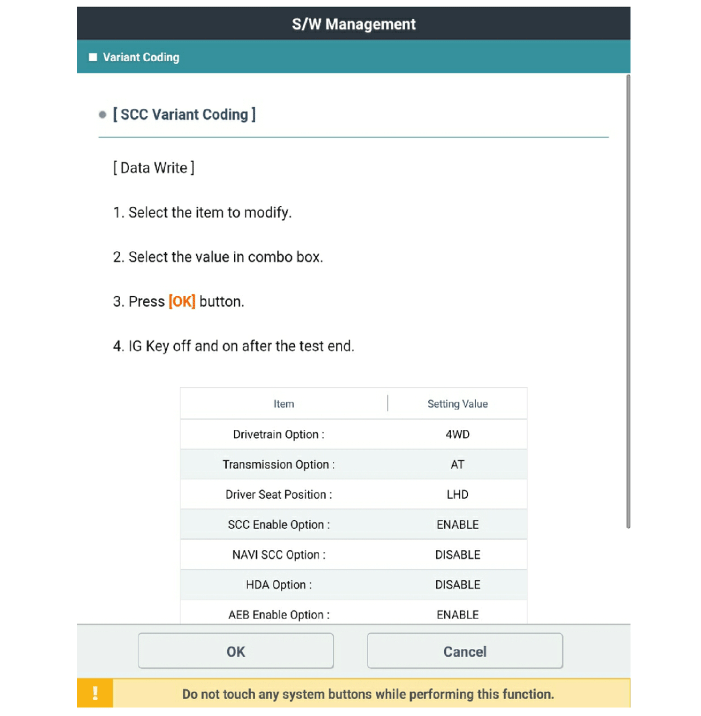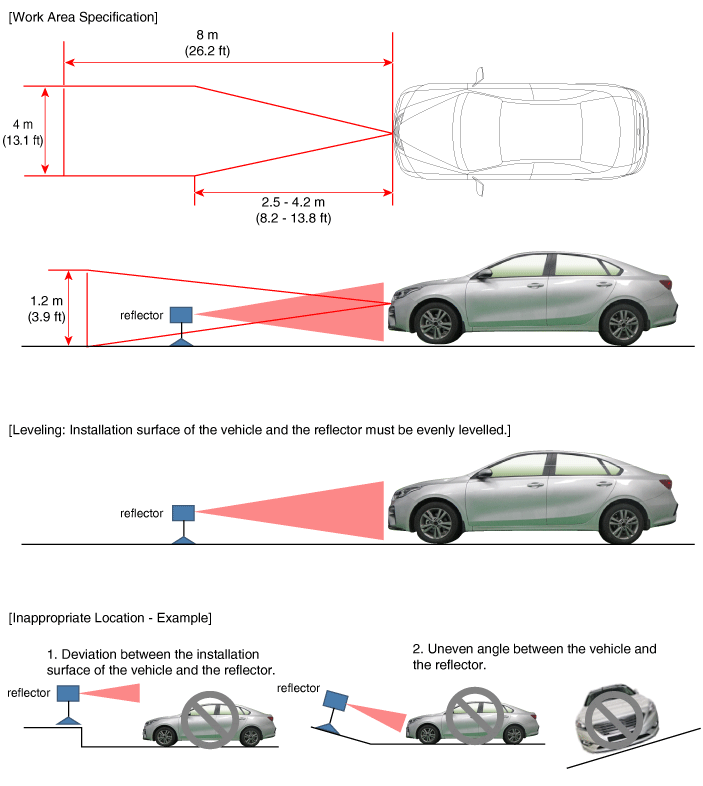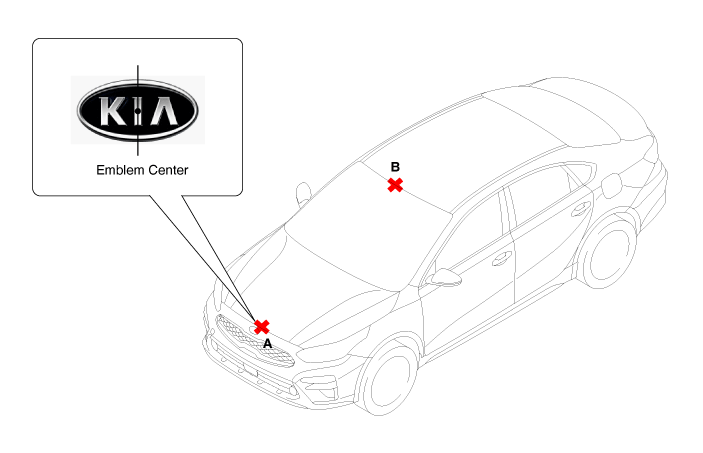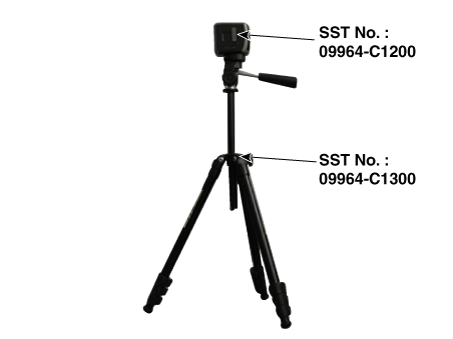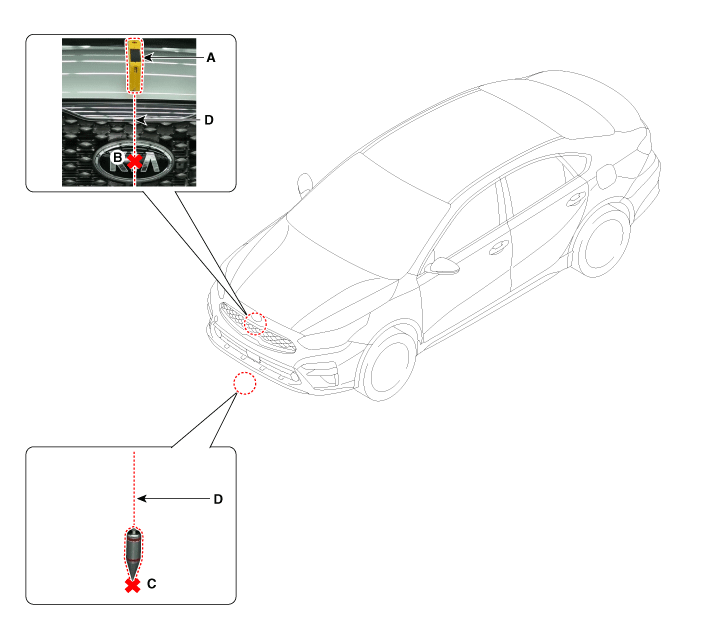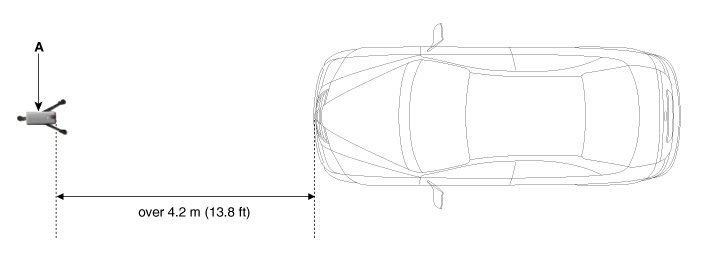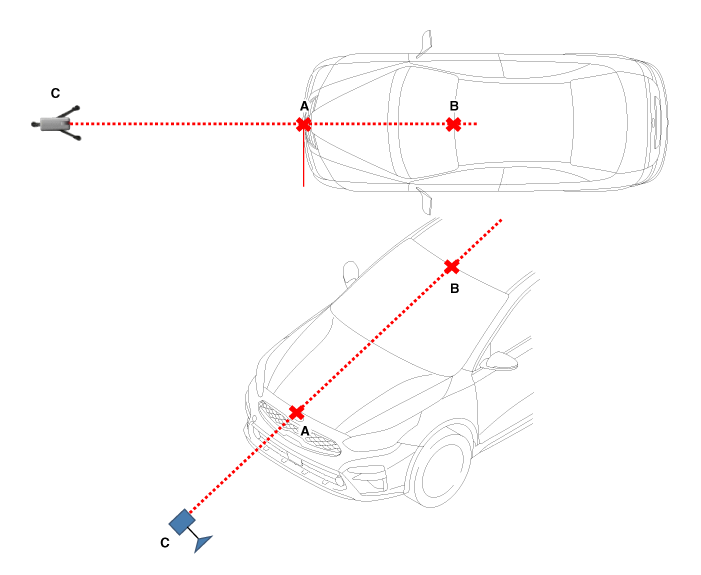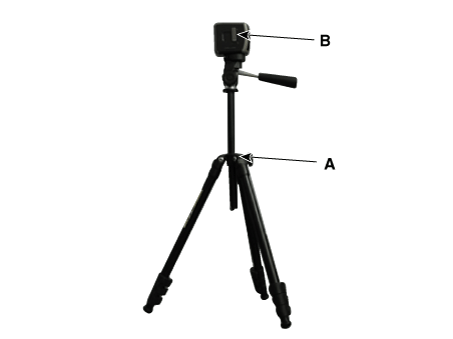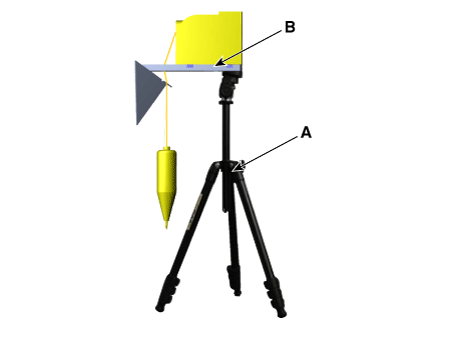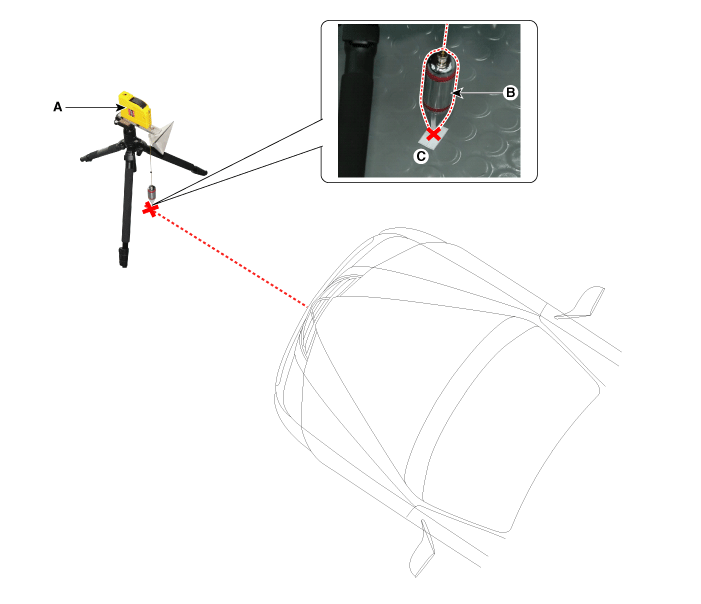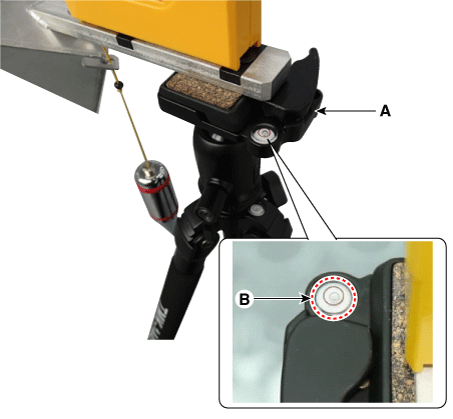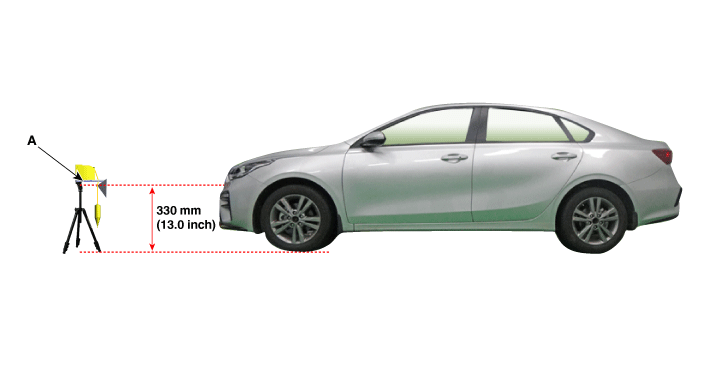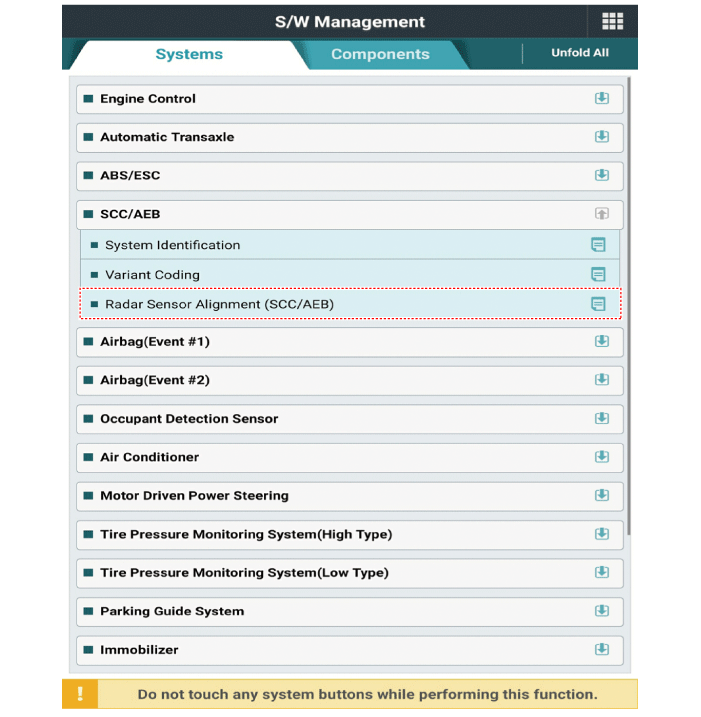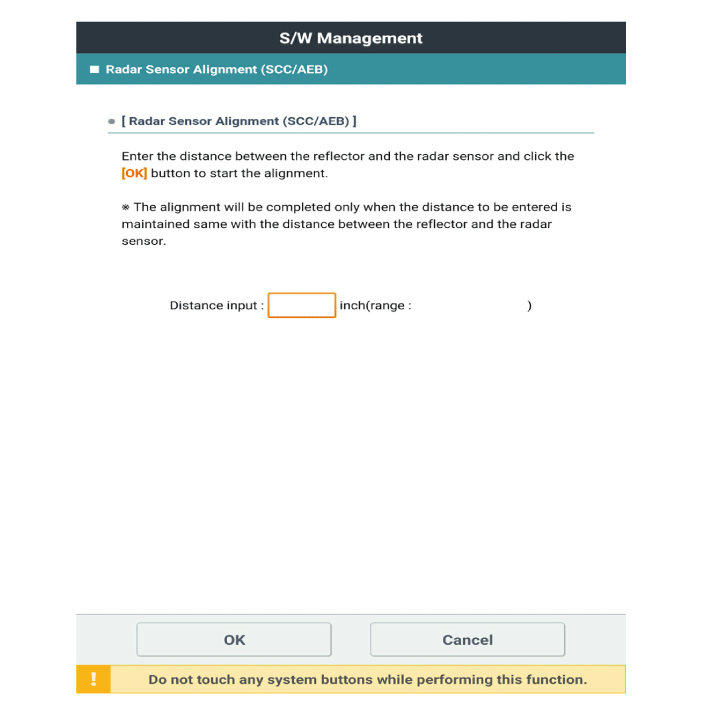Kia Forte: Smart Cruise Control System / Smart Cruise Control Unit
Specifications
| Specification |
|
Item |
Specification |
|
Power supply(V) |
12 |
|
Operation voltage (V) |
9 - 16 |
Components and components location
| Component Location |
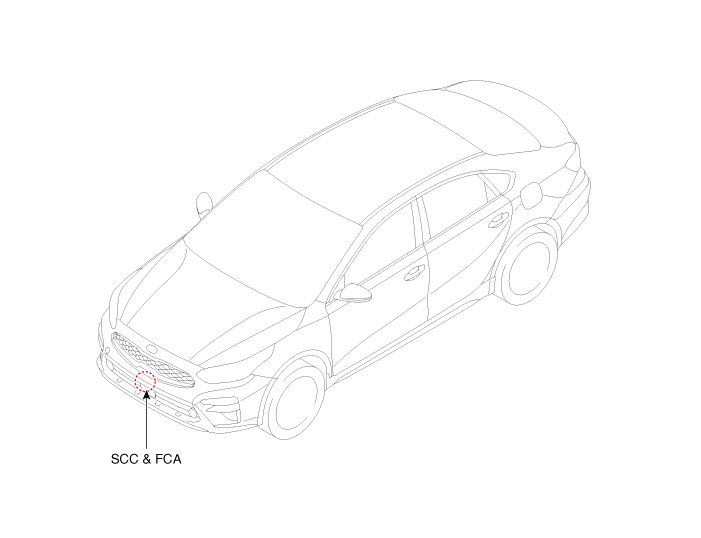
Description and operation
| Description |
The smart cruise control unit is installed on the front right-hand side of the chassis. A radar sensor is embedded in the front section of the unit. This sensor detects vehicles and objects in front of the vehicle. The radar sensor can detect up to 64 objects ahead of the vehicle. The alarm goes off when the vehicle deviates from the horizontal and vertical alignment reference points during operation. This sensor communicates with the dashboard, warning buzzer, smart cruise control switch, Electronic Stability Program (ESP), ECM, and TCM via CAN communication. The sensor controls vehicle speed through CAN communication between the Electronic Stability Program (ESP) system and the ECM and TCM.
Schematic diagrams
| Circuit Diagram |
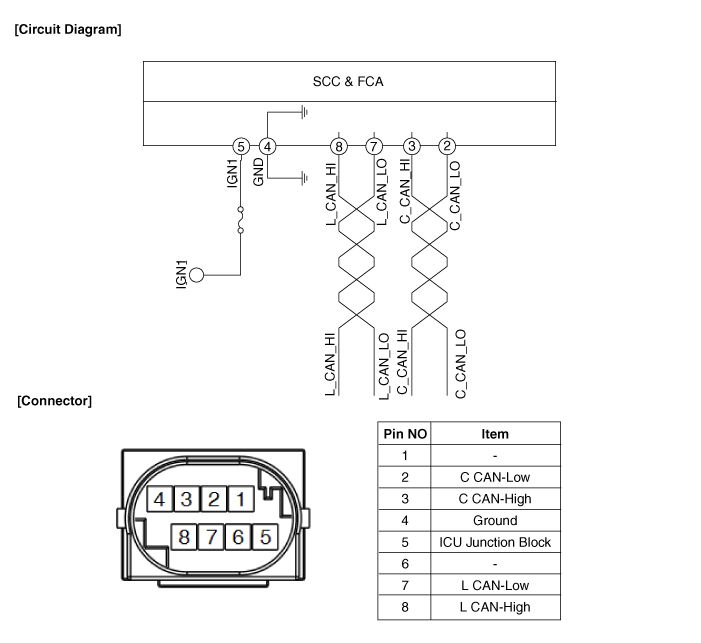
Repair procedures
| Removal |
| 1. |
Remove the front bumper. (Refer to Body (Interior and Exterior) - "Front Bumper Assembly") |
| 2. |
Disconnect the SCC & FCA radar connector (A). |
| 3. |
Remove the SCC & FCA radar (B) after loosening the mounting nuts.
|
| Installation |
| 1. |
Install in the reverse order of removal. |
| 2. |
Align the variant coding procedure. (Refer to Adjustment - "Variant Coding") |
| 3. |
Align the smart cruise control radar sensor. (Refer to Adjustment - "Smart Cruise Control (SCC) Alignment") |
| Adjustment |
Variant Coding
| 1. |
Switch "OFF" the ignition. |
| 2. |
Connect the KDS to Data Link Connector (DLC). |
| 3. |
Switch "ON" the ignition. |
| 4. |
Select "Vehicle, Model year, Engine, System". |
| 5. |
Select "Vehicle S/W Management". |
| 6. |
Perform variant coding.
|
Smart Cruise Control (SCC) Sensor Alignment
Smart Cruise Control (SCC) system is designed to help avoid a potential collision or reduce its impact when drivers applies inadequate, delayed or no brakes at all to avoid a collision.
In order for the radar sensor to operate correctly, it must be properly aligned parallel to the driving direction of the vehicle.For this reason, the radar sensor alignment procedure must be carried out whenever the sensor has been reinstalled or replaced with a new one.
If the sensor alignment procedure is not performed in the conditions mentioned above, the smart cruise control system may not operate correctly.
The SCC radar sensor alignment is required when:
|
The sensor can not recognize a vehicle ahead:
|
Smart Cruise Control (SCC) Radar Alignment
| 1. |
Stop the vehicle horizontally at a flat place.
|
| 2. |
Mark the center point of emblem (A) and the center point on top of wind glass (B).
|
| 3. |
Connect the SCC Calibration Laser (SST No. : 09964-C1200) to the tripod (SST No. : 09964-C1300).
|
| 4. |
By using the SCC Calibration Reflector [SST No. : 09964-C1100] (A), adjust the wire (D) so that the center point of emblem (B) and the center point on the ground (C) are perpendicular to each other.
|
| 5. |
Install the vertical/horizontal laser [SST No. : 09964-C1200] (A) at over 4.2m (12.5 ft) to the front of the vehicle.
|
| 6. |
Match the vertical line of laser to (A) and (B) using the vertical/horizontal laser (C) [SST No. : 09964-C1200].
|
| 7. |
Mark (C) at 1.0 - 3.8 m (3.3 - 12.5 ft) from (A) in front of the vehicle.
|
| 8. |
Remove the SCC Calibration Laser [SST No. : 09964-C1200] (B) from the tripod [SST No. : 09964-C1300] (A).
|
| 9. |
Mount the reflector [SST No. : 09964-C1100] (B) onto the tripod [SST No. : 09964-C1300] (A).
|
| 10. |
Align the vertical weight (B) of the SCC Calibration Reflector [SST No. : 09964-C1100] (A) with the point (C).
|
| 11. |
Using the bubble level (B) of the tripod [SST No. : 09964-C1300] (A), set the reflector horizontally.
|
| 12. |
Set the height of the SCC calibration reflector [SST No. : 09964-C1100] (A) to 330 mm (13.0 inch).
|
| 13. |
Check again the radar sensor and the surface of front bumper for the following items with the eyes.
|
| 14. |
Connect the KDS to the DLC of the vehicle and start sensor alignment.
|
| 15. |
After correctly selecting the vehicle model, select "Radar Sensor Alignment" from the auxiliary functions in KDS Menu.
|
| 16. |
Perform sensor alignment by following the directions shown in the KDS monitor.
|
| 17. |
In case of sensor alignment failure, check the alignment conditions. Turn the ignition key OFF, then reperform the sensor alignment procedure. |
| Inspection |
Inspection procedures for smart cruise control system failure:
| 1. |
Check the bumper appearance and accident history (visual appearance of the vehicle, maintenance and bumper replacement history). → If the vehicle has been crashed, SCC mounting part is highly likely to be twisted. |
| 2. |
Check whether the radar sensor cover of the bumper is dirty. → If the cover is dirty, SCC is highly likely to be released by the foreign substance during operation. |
| 3. |
After starting engine, check SCC warning message on the cluster and DTC code. (Refer to DTC guide.) |
| 4. |
After starting engine, stop for more than 5 seconds. → If system initialization (yaw rate sensor offset compensation) is not completed, SCC will not operate. |
 Smart Cruise Control System
Smart Cruise Control System
General safety information and caution
General Safety Information and Caution
Be careful when driving the vehicle using the smart cruise control system as
follows.
...
 Smart Cruise Control Switch
Smart Cruise Control Switch
Components and components location
Components
1. Right remote control switch
(Trip Computer + SCC)
Schematic diagrams
Circuit Diagram
...
Other information:
Kia Forte 2019-2025 (BD) Owners Manual: Brake system
Power brakes Your vehicle has power-assisted brakes that adjust automatically through normal usage. In the event that the power-assisted brakes lose power because of a stalled engine or some other reason, you can still stop your vehicle by applying greater force to the brake pedal th ...
Kia Forte 2019-2025 (BD) Owners Manual: Immobilizer Indicator Light
Immobilizer Indicator Light (Without Smart Key) This indicator light illuminates: • When the vehicle detects the immobilizer in your key while the ignition switch is ON. - At this time, you can start the engine. - The indicator light goes off after starting the engine. This indic ...

